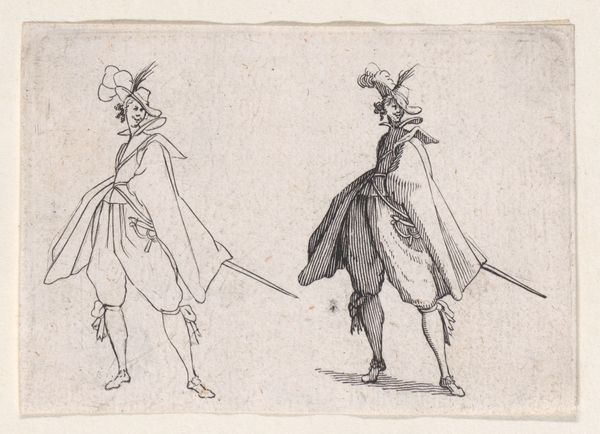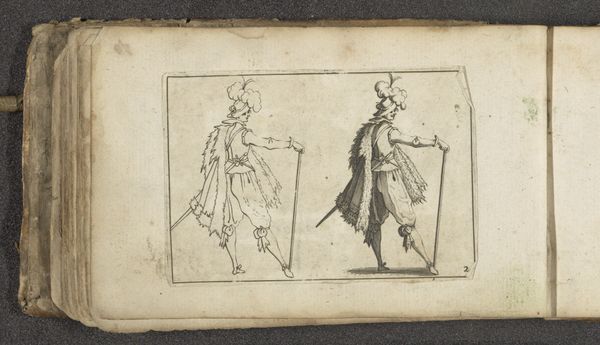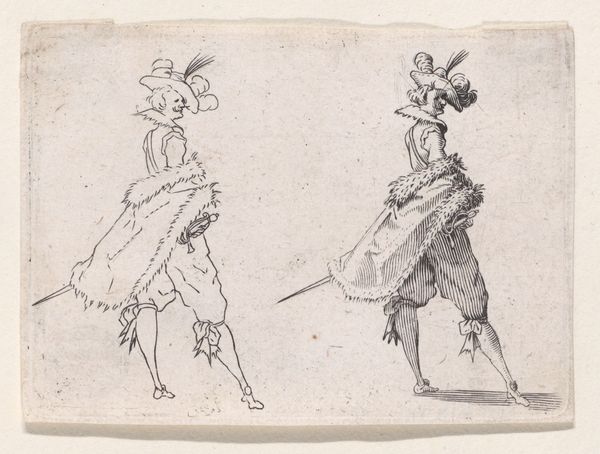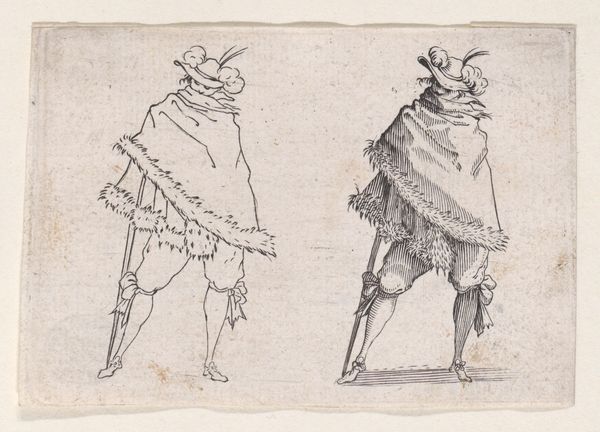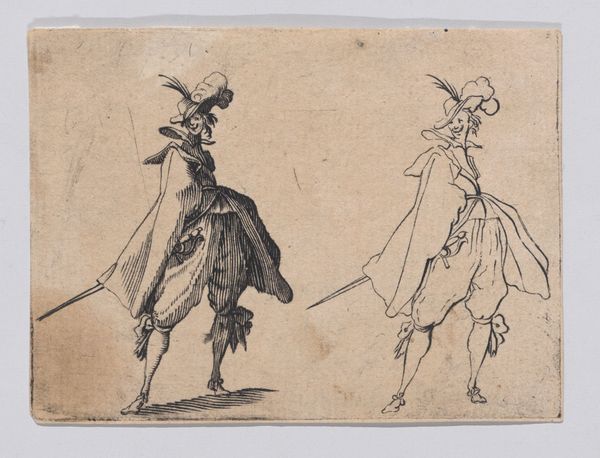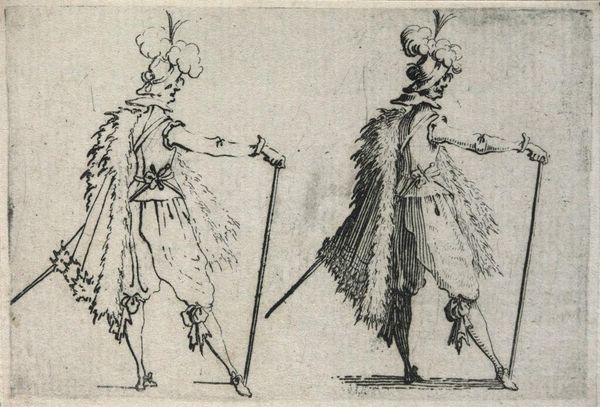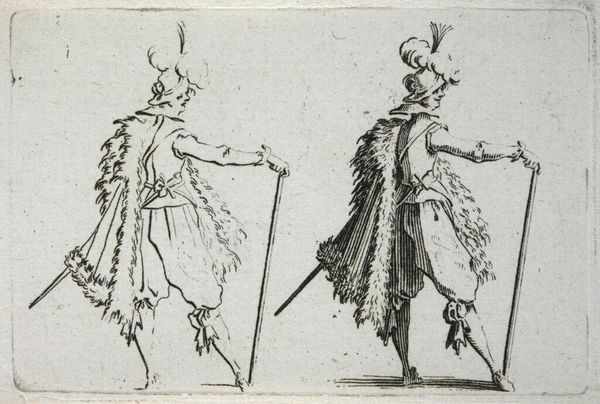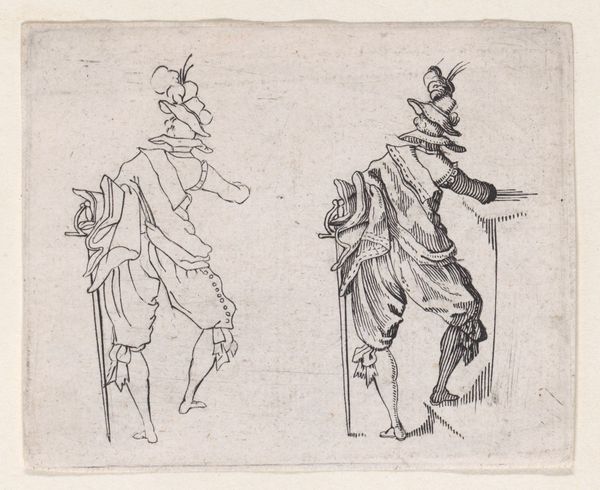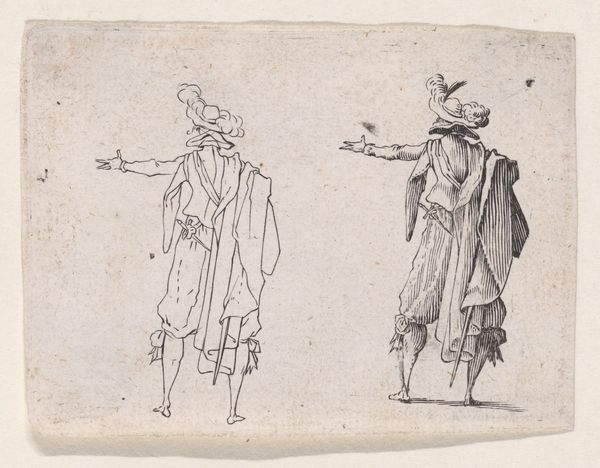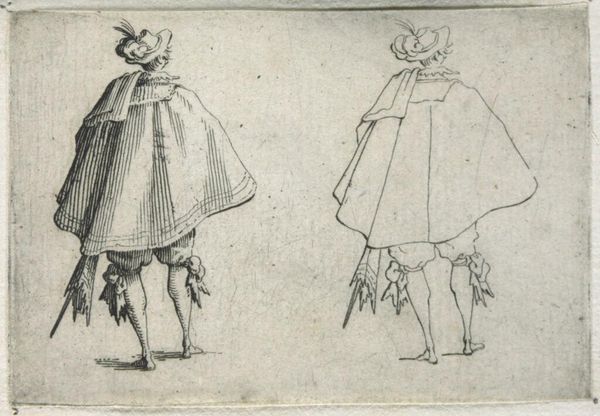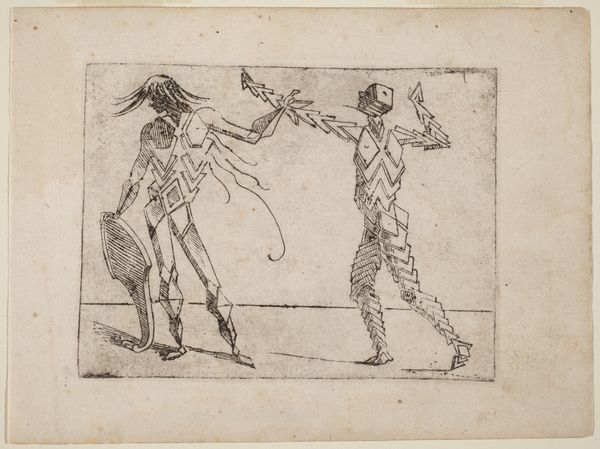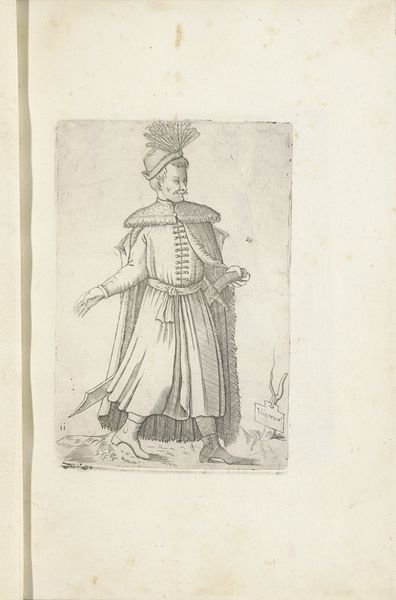
Copy of Le Gentilhomme a la Grande Canne (The Gentleman with the Large Cane), from "Les Caprices" 1620 - 1700
0:00
0:00
drawing, print, engraving
#
portrait
#
drawing
# print
#
history-painting
#
academic-art
#
engraving
Dimensions: Sheet: 2 3/8 x 3 1/4 in. (6 x 8.3 cm) Plate: 2 5/16 x 3 1/8 in. (5.8 x 8 cm)
Copyright: Public Domain
This delicate print, a copy from "Les Caprices", presents us with two figures, each a gentleman distinguished by a large cane and elaborate attire. The cane, a symbol of authority and status, speaks to the social standing of the figures within their world. Consider how such symbols evolve. In ancient times, the staff was a mark of leadership, seen in the hands of priests and rulers. Here, the gentleman's cane is less about practical support and more about projecting an image of power and refinement. It’s a gesture, a pose, almost theatrical. This notion of performance is key. Think of the Commedia dell'arte, where stock characters use props to amplify their roles. The cane, like a mask, becomes part of a visual language, a means of communicating character traits and social position. In the collective memory, these symbols resonate, their meanings layered through centuries of use. The reappearance of the cane is not linear but cyclical, each era imbuing it with new significance while echoing the past. The image resonates with the complex, often subconscious ways we engage with symbols of authority and identity.
Comments
No comments
Be the first to comment and join the conversation on the ultimate creative platform.
